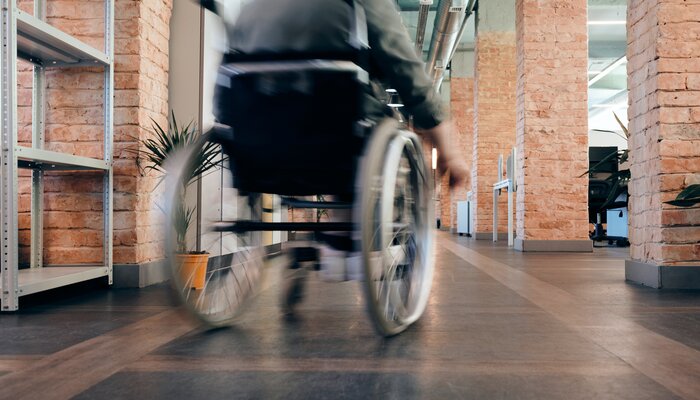When it comes to California Disability Housing and Transportation, a core aspect of focus lies in creating a comfortable and accessible environment for disabled individuals. One crucial area that significantly impacts their everyday lives is the kitchen. It's essential to design kitchens considering the needs and requirements of disabled individuals, thereby ensuring their independence and ease of operation.
Discover the importance of accessible kitchen design in disability housing and transportation. Explore California's commitment to inclusivity, ergonomic kitchen layouts, accessible appliances, and safety measures. Delve into the future of kitchen design with voice-activated technology, adjustable countertops, and automated cabinets.
Why Is Accessible Kitchen Design Necessary?
The kitchen is often regarded as the heart of a home. For disabled individuals, having a kitchen designed with accessibility in mind allows them to navigate and function with minimal assistance. It provides them with the sense of independence and normalcy that is often overlooked in standard design practices.
Key Components Of Accessible Kitchen Design
Some key components of accessible kitchen design include:
Ergonomic Layout
The layout of an accessible kitchen should promote easy maneuverability. Space should be sufficient to allow wheelchair users to turn around comfortably. Lowered countertops and pull-out cabinets can significantly enhance ease of use.
Accessible Appliances
Choosing appliances considering their usability for disabled individuals is crucial. Side-opening ovens, refrigerators with bottom freezers, and dishwashers with front controls are few examples. These appliances need to be placed at suitable heights to facilitate easy access.
Safety Measures
Safety is of paramount importance in kitchen design for disabled individuals. Slip-resistant flooring, rounded countertop edges, and easy-to-grasp handles are essential. The installation of an emergency call system can also add a level of safety.
California's Commitment To Disability Housing And Transportation
California is at the forefront in advocating for accessible housing and transportation for disabled individuals. With policies and guidelines in place, the state ensures that housing and public transportation meet accessibilityThe design of products, devices, services, or environments to be usable by people with disabilities.... standards.
Accessible Housing Initiatives
California's initiatives toward accessible housing for disabled individuals are noteworthy. The state's Fair Housing regulations mandate that all new multi-family housing developments be accessible to those with disabilities.
Accessible Transportation Initiatives
Accessible public transportation is a cornerstone of California's commitment to disabled individuals. The state ensures that public transportation services, such as buses and trains, comply with the Americans with Disabilities Act (ADA)A U.S. law that prohibits discrimination against individuals with disabilities in all areas of publi... standards.
The Future Of Accessible Kitchen Design
With advancements in technology and a growing awareness of inclusivity, the future of accessible kitchen design holds promise. Smart kitchens with voice-activated appliances, adjustable countertops, and automated cabinet systems are on the horizon. These innovations will further ease the lives of disabled individuals and promote independence.
California's commitment to disability housing and transportation, combined with progressive kitchen design, contributes significantly to enhancing the lives of disabled individuals. Accessible kitchen design is not just about convenience; it's about fostering independence, promoting safety, and advocating inclusivity.
Advancements In Accessible Kitchen Design
Advancements in technology have brought about even greater accessibility for disabled individuals for kitchen design:
Voice-Activated Technology
Smart technology has opened new possibilities in creating a more accessible kitchen environment for disabled individuals. Voice-activated technology, in particular, is rapidly transforming the landscape of accessible kitchens. The ability to command appliances like refrigerators, ovens, and even sinks via voice enables individuals with mobility impairments to cook and navigate the kitchen with significantly less physical exertion.
Adjustable Countertops and Sinks
In an accessible kitchen, adjustable countertops and sinks are revolutionary. These installations allow the height to be altered as needed, making it possible for wheelchair users and those with varying heights to use the kitchen comfortably. This adjustability is often achieved using hydraulic systems, providing seamless transitions.
Automated Cabinetry Systems
Automated cabinetry systems are becoming increasingly popular in the realm of accessible kitchen design. Cabinets that lower to a reachable level at the touch of a button provide easy access to stored items for those with mobility restrictions.
Role of Regulatory Bodies in Promoting Accessible Design
Regulatory bodies play a vital role in ensuring accessible design standards are met. In California, the Department of Housing and Community Development and the California Building Standards Commission work in tandem to enforce guidelines that promote accessible housing.
Accessible Kitchen Design For Disabled Individuals
The journey toward comprehensive, accessible design is ongoing, but significant strides have been made in recent years. Advancements in technology and evolving societal attitudes have brought about a revolution in accessible kitchen design, offering new levels of independence to individuals with disabilities. California, with its commitment to disability housing and transportation, provides a promising model for other states and countries to emulate. By combining technology, thoughtful design, and inclusive policies, we can ensure that disabled individuals are provided with the opportunity to lead lives of ease, independence, and dignity.
Find out more about Accessibility Compliance Inspection today for disabled individuals. Learn more by visiting DisabilityHelp and check out our resources to get your business up to code!






